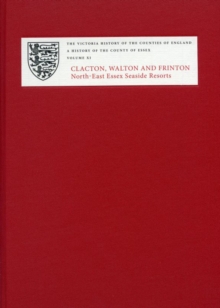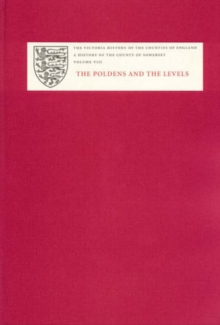
A History of the County of Essex : XII: St Osyth to the Naze: North-East Essex Coastal Parishes. Part 1: St Osyth, Great and Little Clacton, Frinton, Great Holland and Little Holland Hardback
Edited by Christopher C. Thornton
Part of the Victoria County History series
Hardback
- Information
Description
An important contribution to the social, cultural and economic history of seaside resorts and their hinterland in Essex. The nine Essex parishes lying in a coastal district between St Osyth and the Naze headland at Walton encompass a number of distinct landscapes, from sandy cliffs to saltmarshes, recognised as environmentally significant.
The landscape has constantly changed in response to changing sea levels, flooding, draining and investment in sea defences.
Inland, there was an agriculturally fertile plateau based on London Clay, but with large areas of Kesgrave sands and gravels, loams and brickearths.
Parts were once heavily wooded, especially at St Osyth. The district was strongly influenced by the pattern of estate ownership, largely held by St Paul's Cathedral from the mid-10th century.About 1118-19 a bishop of London founded a house of Augustinian canons at St Osyth, which became one of the wealthiest abbeys in Essex.
Most other manors and their demesnes in the district were small and their demesne tenants were of little more than local significance.
After the Reformation all of the former church lands in the district were granted to the royal servant Thomas Darcy, 1st baron Darcy of Chiche (d. 1558). Darcy built a great mansion, St Osyth Priory, on the site of the former abbey, which became the centre of his new estate. The area's economy was strongly affected by the coast and its many valuable natural resources, including the extraction or manufacture ofsand, gravel, septaria, copperas and salt, and activities such as fishing, tide milling, wrecking and smuggling.
However, it remained a largely rural district and its wealth ultimately depended upon the state of farming.
Until the eighteenth century it specialised in dairying from both sheep and cattle, but afterwards production shifted towards grain. The coastal area has produced significant evidence of early man and was heavily exploited and settled in prehistory.
The medieval settlement pattern largely conformed to a typical Essex model, with a complex pattern of small villages, hamlets and dispersed farms, many located around greens or commons.
The largest settlement wasthe nucleated village or small town at St Osyth, located outside the abbey gates, which had a formal market and wool fair in the Middle Ages.In the 19th and 20th centuries the coast witnessed the development of seaside resorts atWalton, Clacton and Frinton.
Some overspill affected the surrounding more rural parishes, and from the 1920s new types of resort developed in the form of seaside camps, chalets and caravan parks.
Information
-
Out of StockMore expected soonContact us for further information
- Format:Hardback
- Pages:450 pages, 18 colour, 102 b/w, 24 line illus.
- Publisher:Victoria County History
- Publication Date:21/08/2020
- Category:
- ISBN:9781904356493
Information
-
Out of StockMore expected soonContact us for further information
- Format:Hardback
- Pages:450 pages, 18 colour, 102 b/w, 24 line illus.
- Publisher:Victoria County History
- Publication Date:21/08/2020
- Category:
- ISBN:9781904356493



